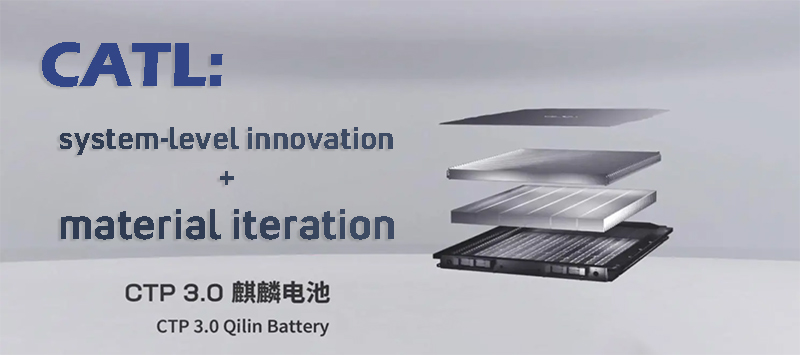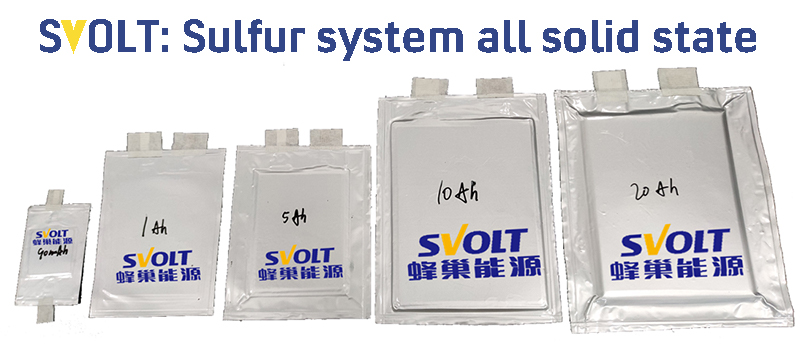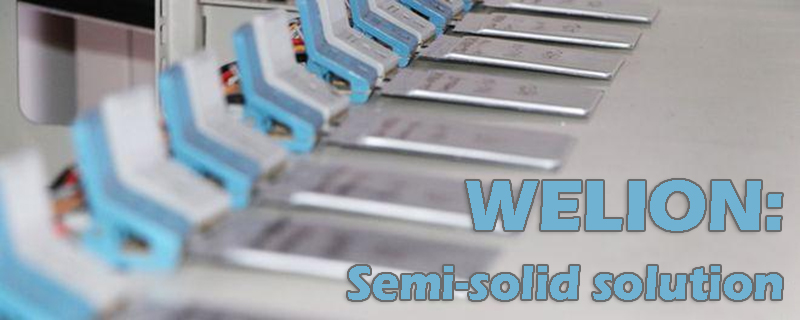
Main content:
1,000 kilometers of battery life is becoming an example to measure a company's battery technology innovation. Of course, to achieve the above-mentioned battery life, it is by no means solved by stacking batteries, but through innovations at the level of battery materials and systems. Since the beginning of 2022, a number of battery companies such as CATL, GOTION-HIGH TECH, and SVOLT, which are among the Top 10 power battery companies in the world, have successively announced battery solutions with a range of 1,000 kilometers. However, the technical routes of each company are also different, some from the system level, some from the battery material level, and some give answers from the frontier technology.
NIO, IM, GACNE and other car companies have successively announced pure electric models with a range of 1,000 kilometers, which also means that related models have begun to gradually enter mass production. Among them, GACNE declared a new model Aion LX in November last year, with a NEDC battery life of up to 1008km, using sponge silicon anode battery technology; NIO announced its 1000km battery life model ET7 at the beginning of last year, using semi-solid battery technology, it is expected to be launched in the fourth quarter of this year. In addition, it is reported that HiPhi is also expected to launch an electric model with a range of more than 1,000 kilometers this year. By comprehensively sorting out and comparing the 1,000-kilometer battery life solutions given by various companies, we can actually see some development trends of the battery route.
1.CATL: system-level innovation + material iteration

On June 23, 2022, CATL officially released CTP 3.0 - Kirin battery technology, the system integration reached a new high in the world, the volume utilization rate exceeded 72%, and the system energy density reached 255Wh/kg. CATL said that models equipped with Kirin batteries can easily achieve a cruising range of 1,000 kilometers. On the technical path to achieve 1,000 kilometers of battery life, CATL currently announces that through the innovation of battery system structure, the group efficiency and volume utilization rate are greatly improved. Meanwhile, it is equipped with high-energy-density cells, which can significantly increase the charging capacity of the whole package under the original battery pack volume.
In fact, to achieve a system energy density of 255Wh/kg, the cell energy density is expected to be around 320Wh/kg based on the 80% group efficiency. Therefore, it is speculated that in addition to the innovation of the system itself, CATL's cells themselves also have obvious breakthroughs in materials compared with the existing indicators in the solution to achieve 1,000 kilometers of battery life. According to relevant news, it is expected that new materials such as high nickel and silicon anodes have been applied to Kirin battery products. According to the plan, the CATL CTP 3.0 Qilin battery will be mass-produced and launched in 2023. Currently, car companies including Li, LOTUS and NETA have hinted that Qilin batteries will be installed in their models.
2.GOTION HIGH-TECH: semi-solid battery + silicon anode
On May 28, 2022, GOTION HIGH-TECH insiders revealed that the semi-solid battery developed by GOTION with a single energy density of up to 360Wh/kg and a system energy density of 260Wh/kg will be installed on vehicles this year. According to reports, the models equipped with semi-solid batteries have a battery pack capacity of 160kWh, a cruising range of up to 1000km, and an acceleration time of only 3.9s per 100 km."A semi-solid battery with an energy density of 360Wh/kg, GOTION HIGH-TECH has been developed through material and process innovation, with solid electrolyte coated on the surface of the positive material particle, silicon anode, new HIGH safety functional separator and HIGH safety liquid electrolyte." In addition to the 360Wh/kg product that will be mass-produced this year, the 400Wh/kg ternary semi-solid battery developed by GOTION currently has prototype samples in the company's laboratory.
3.SVOLT: Sulfur system all solid state
Recently, the SVOLT all solid state battery laboratory has developed the first batch of 20Ah-class chalcogenide all-solid-state prototype batteries in China. This series of cells has an energy density of 350-400Wh/kg, and has successfully passed experiments such as acupuncture and a 200°C hot box. Once mass-produced and applied in the future, electric vehicles can achieve a cruising range of more than 1,000 kilometers. SVOLT claims that it is the first company in China to complete the research and development of 20Ah-class chalcogenide all-solid-state prototype batteries, and its all-solid-state laboratory adopts the extremely difficult sulfide technology route.

It is deployed in the aspects of sulfide electrolyte and its thin film preparation technology, electrode and electrolyte membrane contact interface optimization, and sulfide all-solid-state battery preparation capabilities. At present, SVOLT has independent research and development capabilities such as kilogram-level independent synthesis of solid electrolyte materials, continuous preparation of solid electrolyte membranes, assembly of all-solid-state pouch cells, and new equipment development. While gaining experience, it has also launched relevant patent layouts in a targeted manner.
4.WELION: Semi-solid solution
In November 2021, it was reported that NIOET7 models with a range of more than 1,000 kilometers will be equipped with semi-solid batteries that will be provided by WELION. It is understood that WELION has built a 2GWh large-scale solid-liquid hybrid solid-state power battery production line, which mainly produces 350-360Wh/kg power batteries for new energy vehicles. According to reports, the hybrid solid-liquid solid-state battery currently mass-produced by WELION, its cathode and anode material system is not much different from the current liquid battery, mainly based on material systems such as modified high-nickel ternary, silicon-based anode materials, mixed solid-liquid solid electrolytes, and ion conductive membranes.

In terms of car companies, GACNE's first 1000-kilometer battery life model Aion LX, by doping silicon in the anode, makes the silicon anode inside the battery soft and elastic, so that the expansion and contraction of silicon in the process of charging and discharging is limited and buffered, and it will not be broken; At the same time, the silicon anode also absorbs water like a sponge, allowing the silicon anode to take advantage of its large capacity and store more energy. The technologies involved include "nano-composite silicon technology", "adhesive with self-healing function", "gradient composite coating technology" and so on. IM has jointly developed the technology of "silicon-doped lithium-ion battery" with CATL. The two parties will share technical patents and cooperate to complete various rigorous tests of complete vehicles. In the future, they will be the first to apply this battery technology in the world and mass-produce power batteries equipped with this technology.
To sum up, it can be seen that at present, in terms of 1,000-kilometer battery life, various companies mainly achieve it through several dimensions such as materials, processes, and system innovation. In the application of new materials, high-nickel/ultra-high nickel, silicon anode, lithium-sulfur batteries and solid-liquid mixed electrolytes have become key breakthrough directions for battery companies; in terms of system innovation, CTP, CTB, CTC and other innovations continue to iterate to continuously improve the group efficiency and volume utilization of the battery system, thereby achieving higher battery life, better performance and higher safety. When it comes to material innovation, graphene batteries are also one of them, and some companies are currently deploying them. The Top 10 condensed state battery companies on our website provides you with information and updates on these companies to help you fully understand the current status and development prospects of this new technology.
Related article: solid state batteries vs lithium ion, Top10 sodium-ion battery companies
















